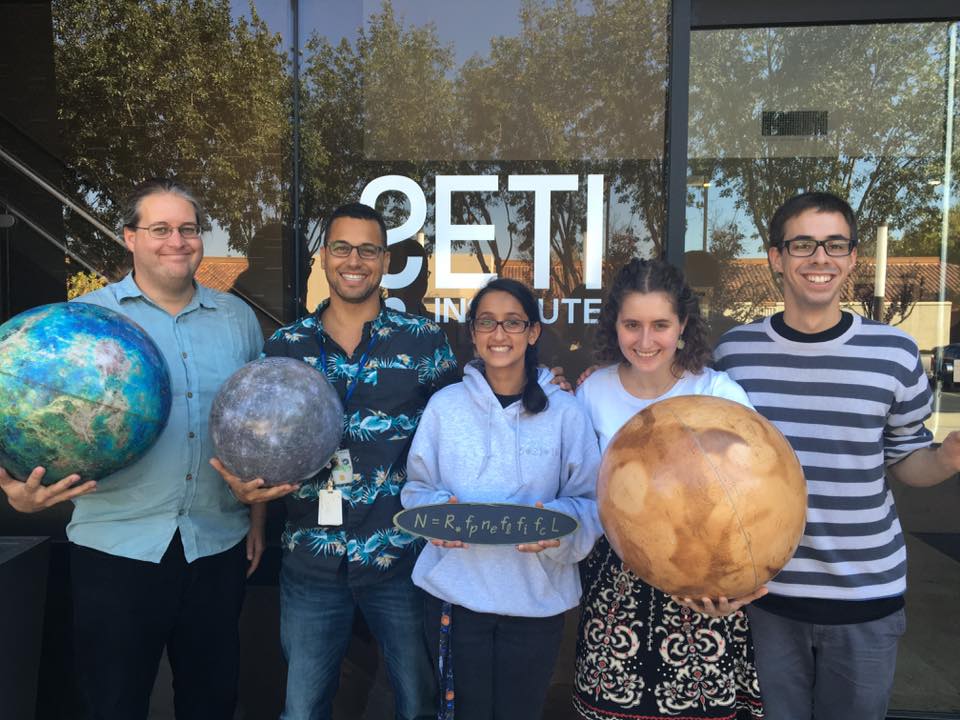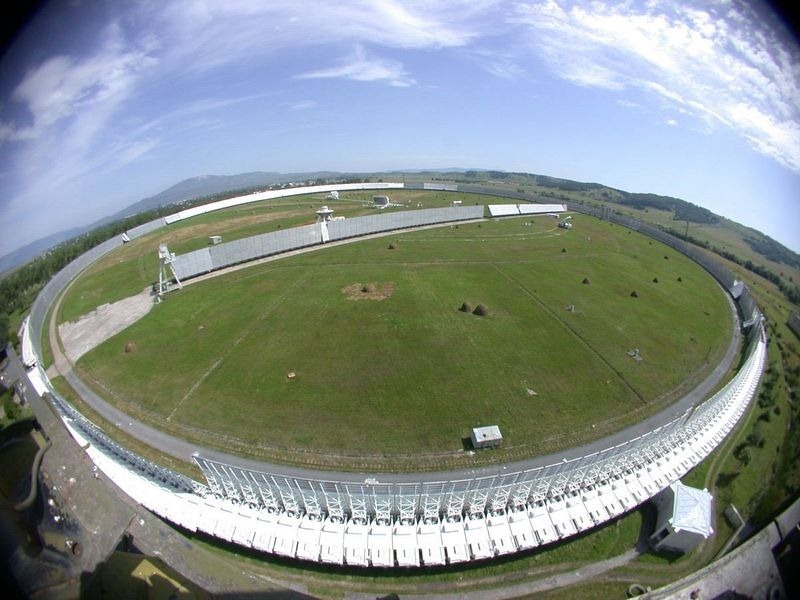SETI Institute
- All
- Adaptive Optics
- Asteroids
- ATA
- Comet
- Conference
- Corot
- Discovery
- Discussion
- Diversity
- ELTs
- Exo-Planets
- FIRST
- Galileoscope
- Group
- Hawaii
- HD 10180
- History
- HST
- Io
- IYA
- Keck
- Kepler
- Mars
- Mauna Kea
- Mission
- Moon
- Multiple Exoplanet Systems
- Observations
- Personal
- Seminar
- SETI Institute
- Space Mission
- Thoughts
- Titan
- TMT
- UC-Berkeley
- Uncategorized
- Unistellar
- VLT
- Volcanism
Capturing a Snapshot of Pluto’s Atmosphere. The Story of an Occultation

Last Tuesday night, a large number of amateur and professional astronomers located across Mexico, the US, and Canada took advantage of a rare and exciting opportunity: observe a blinking star while Pluto occulted it. In Southern California, the SETI Institute, the Observatoire de Paris, Unistellar, and Oceanside Photo and Telescope (OPT), one of the largest telescope retailers in the world, collaborated to observe this rare event and gather the precious data we need to understand Pluto’s atmosphere and climate. Here is our story.
Like most events in the world of modern astronomy, this one started with an email.
In February 2018, I... read more ❯
Seeing the Sombrero Galaxy Seen From Cities

I am happy to share with you an update from Unistellar. Our team has recently collected a pair of images of the glorious Sombrero Galaxy (M104 in the Messier Catalog) taken during one of the most recent observing runs.
Both images were taken in heavily light-polluted environments, the first near Marseille, in the south of France, on May 17 and the second from San Francisco, California on May 14. As usual, these are unedited images, and they clearly show what you can see with our eVscope prototype after just a few hundreds of seconds of observing.
Sombrero Galaxy (M104) taken from San Francisco, on... read more ❯
SETI Alumni: Portrait of Sarah Blunt

Sarah Blunt, REU student class of 2015, is today a full member of the Gemini Planet Imager Exoplanet Survey. Together with SETI researcher Eric Nielsen and Franck Marchis, she has developed an innovative method to fit the orbits of directly imaged exoplanets. She has published her work in Astronomical Journal and is a recipient of an NSF Graduate Research Fellowship that will fund her graduate school. Here her story.
Every year the SETI Institute hosts several interns who work with our researchers through a Research Experience for Undergraduates (or REU) program funded by the National Science Foundation. We often wonder what... read more ❯
Let's be careful about this "SETI" signal

August 31: See update at the end of this post
Several readers have contacted me recently about reports that a group of international astronomers have detected a strong signal coming from a distant star that could be a sign of a high-technology civilization. Here’s my reaction: it’s interesting, but it’s definitely not the sign of an alien civilization—at least not yet.
Here’s why:
The signal was first detected in May 2015 and has not repeated since. Unfortunately, although international protocols call for alerting the astronomical community to the detection of a mysterious signal, the... read more ❯
Des mondes similaires au nôtre cachés dans des centaines d’exoplanètes ? SETI PR en Francais
Communiqué de presse de l'Institut SETI et de CASCA
Monday, June 09 2014 - 12:15pm, PDT
Mountain View, CA -
Cette année a été intense pour les chasseurs d’exoplanètes, ces planètes autour d’autres étoiles. Une équipe d'astronomes de l’Institut SETI et du centre de recherche de la NASA Ames a découvert 715 nouvelles exoplanètes enfouies dans les données du télescope spatial Kepler. Ces nouveaux mondes qui tournent autour de 305 étoiles différentes, constituent des systèmes planétaires multiples, similaires a notre système solaire, lui-même constitué de huit planètes. L’annonce de cette découverte a été suivie par une nouvelle encore plus importante dans le monde... read more ❯
Meeting the Team: GPI Science Meeting November 2013

The Gemini Planet Imager (GPI) team held our latest science meeting November 1-2, 2013, right before GPI saw first starlight. The meeting was hosted by the SETI Institute at their office in Mountain View, CA (for those curious, I did not find any signs of aliens there). Continuing with tradition, we took a group picture of the GPI team. You can tell it has grown significantly from the past.
Building an instrument as complex as the Gemini Planet Imager (GPI) and using it to directly image planets... read more ❯
The Next Step in Exoplanetary Science: Imaging New Worlds
In 2003, I was lucky enough to be part of a small group of astronomers that met at the University of California at Berkeley to brainstorm on an innovative idea: the design of an instrument to image and characterize planets around other stars, called exoplanets, using a telescope in the 8 – 10 meter class. A decade later, such an instrument became reality with the arrival of the Gemini Planet Imager (called also GPI, or “Gee-pie”) instrument at the Gemini South telescope in Chile.
Five known planetary systems imaged with current adaptive optics systems. Fomalhaut shown on... read more ❯
Fate of Planetary Habitability highlighted at the AGU Fall Meeting
Together with Cynthia Phillips, one of my SETI Institute colleagues, I will convene a session at the AGU Fall meeting tomorrow afternoon (oral) and Friday December 13 (poster) entitled "Rapid Environmental Change and the Fate of Planetary Habitability".
This session will be an opportunity to see recent works on the adaptability of life in abrupt climate crises. Recent discoveries inspire us to re-examine our understanding of how rapidly planetary habitats can be redistributed. Past habitable environments on Mars from the Curiosity rover, possible subsurface lakes on Europa, and potentially habitable exoplanets from the Kepler spacecraft continue to expand our definition of the... read more ❯
GPI is ready for its new location in Chile

It is now official, The Gemini Planet Imager ("Gee-pi") is ready for shipping to Chile. This decision was taken on July 19 after the positive pre-delivery acceptance review. From its current home at the University of California Santa Cruz, the instrument’s Integral Field Spectrograph (IFS) began its warm-up a week later (July 25th), and the computers were shut-down two days ago (July 31st).
GPI is going to be carefully packed for a long trip to Chile. The instrument will be shipped... read more ❯
SETI Institute Waved at Saturn
Like several thousand people, the SETI Institute waved at Saturn on Friday July 19 at 2:27pm for ~15 min. In full day light, it was impossible to see Saturn on the east close to the horizon but we trusted our local astronomers (and several App on iPhone) to wave and smile in the right direction toward the gaseous planet. It is likely that the Cassini spacecraft had recorded 80 min later a glimpse of photons coming from us.
It was fun to participate to this "global moment of cosmic... read more ❯